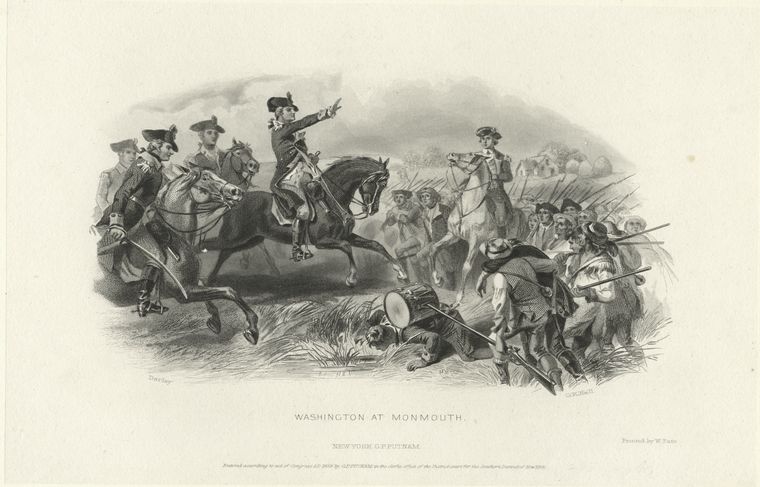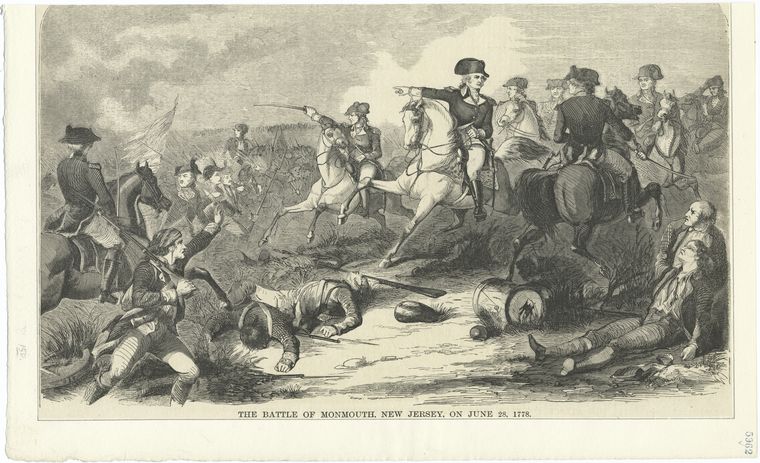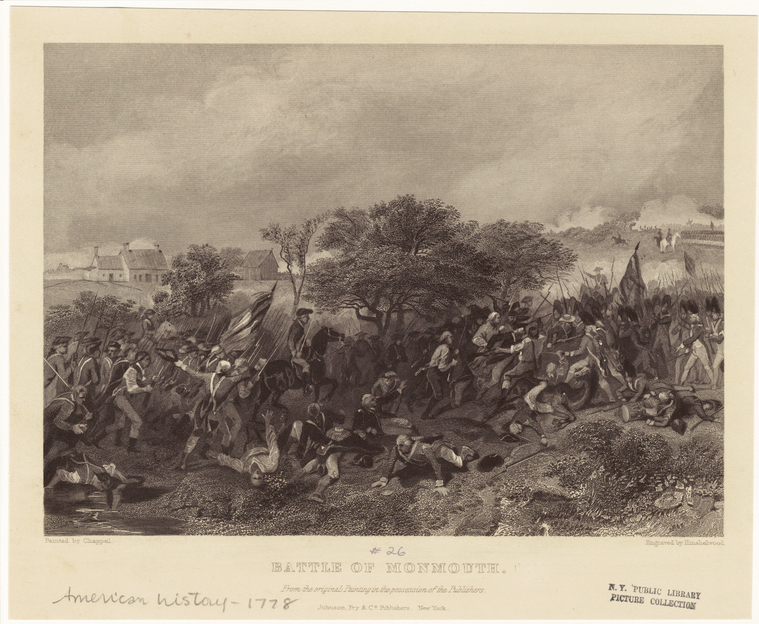Close Call at Monmouth, 1778
 This was probably one of the largest engagements fought in the American Revolution. No larger battles occured in the United States until the Civil War. Yet, there is a surprising paucity of books concerning this pivotal event. Why is this so? Monmouth certainly gets mentioned in every history of the Rev War, but in-depth studies are scarce. William Stryker wrote a full length history many years ago, and while its comprehensive, the author's bias is decidedly slanted toward the patriot cause. Stryker does provide a more detailed description of the battle, but with some unfortunate errors. In particular noting that the British attacks upon the Hedgerow and elsewhere were in column! Certainly no such formation was ever employed at this or any other Rev War battle. The current work does not make this mistake, and the Spirit of 1776 Syndrome which taints so much research on the Rev War is not as present here, yet the book still falls short in a number of ways.
This was probably one of the largest engagements fought in the American Revolution. No larger battles occured in the United States until the Civil War. Yet, there is a surprising paucity of books concerning this pivotal event. Why is this so? Monmouth certainly gets mentioned in every history of the Rev War, but in-depth studies are scarce. William Stryker wrote a full length history many years ago, and while its comprehensive, the author's bias is decidedly slanted toward the patriot cause. Stryker does provide a more detailed description of the battle, but with some unfortunate errors. In particular noting that the British attacks upon the Hedgerow and elsewhere were in column! Certainly no such formation was ever employed at this or any other Rev War battle. The current work does not make this mistake, and the Spirit of 1776 Syndrome which taints so much research on the Rev War is not as present here, yet the book still falls short in a number of ways.
The current authors unfortunately have not created the definitive study of the battle however. Too much time is wasted covering local New Jersey events during the Rev War. For sure the significant amount of infighting between Loyalist and Rebel was a key element of the conflict in this divided region, but it bears little importance on the Monmouth Campaign and battle itself. The authors would have done better to have written a separate book chronicling the Civil War in Jersey and concentrated instead on Monmouth.

In the opening stages General Lee falls back in disorder before the British advance under Clinton and Cornwallis. Then Washy rides onto the scene and in a grand repeat of his showing at Princeton the year before rallies and reforms the American line. That line withstands the series of largely uncoordinated British attacks behind fences, hedgerows and a modest Hill. These attacks are conducted by the British in linear order, or in some cases very disordered lines from chasing the rebels across the fields. Not in columns! This hardly demonstrates the ability of the new model American army to conduct itself against the British squarely in the open. In fact had Clinton been able to push his heat-exhausted troops harder they might have gained the crucial ground that Washy manages to make his epic stand upon.


There is a nice end chapter about how the battlefield was honored and preserved over the years with New Jersey just barely saving it from the rapacious real estate developers! Jersey tends to drag its feet when it comes to history! Another deals with the legends of the battle, including that feisty little maid Molly Pitcher who keeps popping up all the time! Who was she? We will likely never know for sure. She remains one of the enduring legends associated with this battle.
![Heroism Of Moll [I.E.Molly] Pitcher., Digital ID 808706, New York Public Library Heroism Of Moll [I.E.Molly] Pitcher., Digital ID 808706, New York Public Library](https://images.nypl.org/?id=808706&t=w)
Read E-Books with SimplyE
 With your library card, it's easier than ever to choose from more than 300,000 e-books on SimplyE, The New York Public Library's free e-reader app. Gain access to digital resources for all ages, including e-books, audiobooks, databases, and more.
With your library card, it's easier than ever to choose from more than 300,000 e-books on SimplyE, The New York Public Library's free e-reader app. Gain access to digital resources for all ages, including e-books, audiobooks, databases, and more.
If you don’t have an NYPL library card, New York State residents can apply for a digital card online or through SimplyE (available on the App Store or Google Play).
Need more help? Read our guide to using SimplyE.